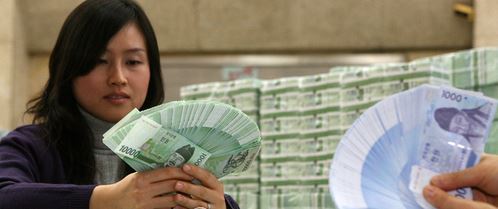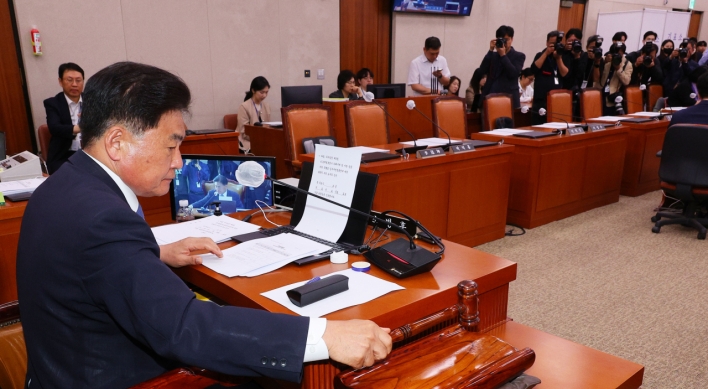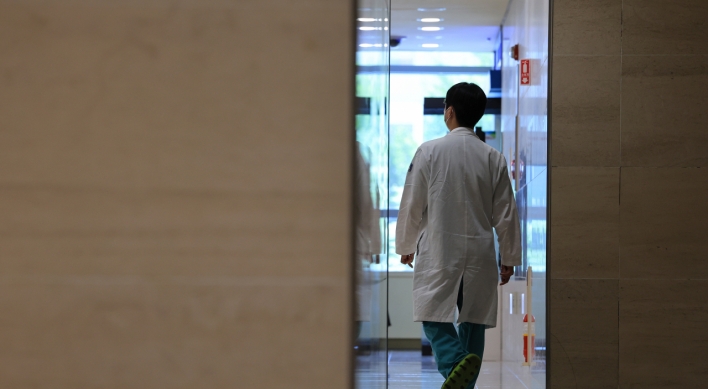[News Focus] Is it time to recalibrate the Korean won?
Among OECD members, Korea’s dollar exchange rate second only to Colombia’s
By Kim Yon-sePublished : June 7, 2020 - 16:00

SEJONG -- In 2019 South Korea ranked 20th in gross domestic product per capita among the 37 members of the Organization for Economic Cooperation and Development, outstripping Japan and Spain.
In terms of GDP alone, over the past five years Korea has moved around on the list, occupying the eighth through the 11th positions. Further, it is one of the world’s six largest exporters.
But Korea is one of only two OECD countries where the value of the currency against the US dollar posts four digits. In that respect, the won is second only to the Colombian peso.
Economists at home and abroad have repeatedly pointed out that the exchange rate of about 1,200 won per dollar is an anomaly, given the scale of the national economy and the country’s trade volume.
They have advocated redenomination -- slashing the face value of the local currency and replacing the 10,000 won banknote with 100 won or 10 won notes.
Under the Park Geun-hye administration (2013-2017), which pledged to prevent large sums of cash from circulating in the underground economy by forcing it aboveground, the issue of redenomination came into the spotlight but eventually fizzled out.
The incumbent Moon Jae-in administration has yet to comment on the matter. While the Ministry of Economy and Finance remains silent, Bank of Korea Gov. Lee Ju-yeol said last year that the central bank would not push for redenomination. Lee was reappointed and his term was extended until March 2022.
Some market observers are pinning their hopes on the 21st National Assembly, which started its four-year term last week. If they are to revitalize the talks and generate interest in the matter, lawmakers will have to take the initiative by conducting research or proposing relevant motions.
It has been 18 years since former BOK Gov. Park Seung proposed slashing the face value of the nation’s currency upon taking office.
That BOK project, initiated during the Kim Dae-jung administration (1998-2003), came to the fore during the Roh Moo-hyun administration (2003-2008). But it was eventually scrapped, apparently because senior government officials opposed it.
Skeptics warn of inflation potentially leading to chaos. Retail prices would be rounded up, they say. If the currency were cut by a factor of 1,000 to 1, said one critic, products worth 950 won would cost 0.95 won and retailers would have to charge 1 won.
They also warn of a huge cost burden, saying it would be necessary to replace automated teller machines and establish new financial information technology systems.
In contrast, proponents point out that the nation’s nominal GDP has increased more than 4,000-fold since 1962, the last time the nation adjusted the face value of the won. Pointing to the examples of other emerging nations, they say any adverse effects would ultimately be overcome.
Since gaining independence in 1945, Korea has redenominated its currency on three occasions -- in 1950, 1953 and 1962. The third reform, carried out in June 1962 under then-acting President Park Chung-hee, saw 10 hwan converted to 1 won.
In the 1970s, in accordance with the 1962 reform, the most commonly used banknotes made their debuts -- 5,000 won in July 1972, 10,000 won in June 1973 and 1,000 won in August 1975. The first 50,000 won bills were issued in June 2009.
Over the past 58 years, Korean banknotes have undergone design changes and anti-forgery treatments, but no denomination changes or name changes.
By Kim Yon-se (kys@heraldcorp.com)










![[Kim Seong-kon] Democracy and the future of South Korea](http://res.heraldm.com/phpwas/restmb_idxmake.php?idx=644&simg=/content/image/2024/04/16/20240416050802_0.jpg&u=)








![[Today’s K-pop] Zico drops snippet of collaboration with Jennie](http://res.heraldm.com/phpwas/restmb_idxmake.php?idx=642&simg=/content/image/2024/04/18/20240418050702_0.jpg&u=)